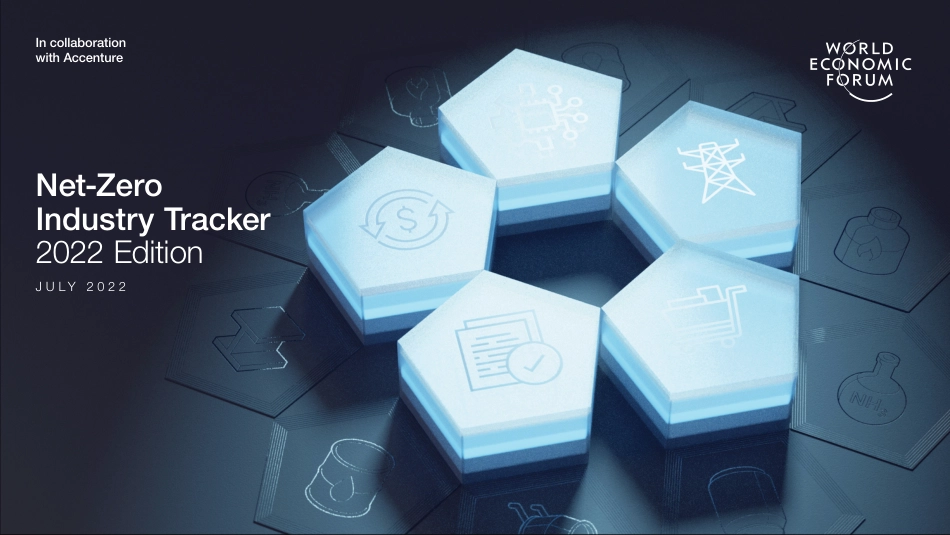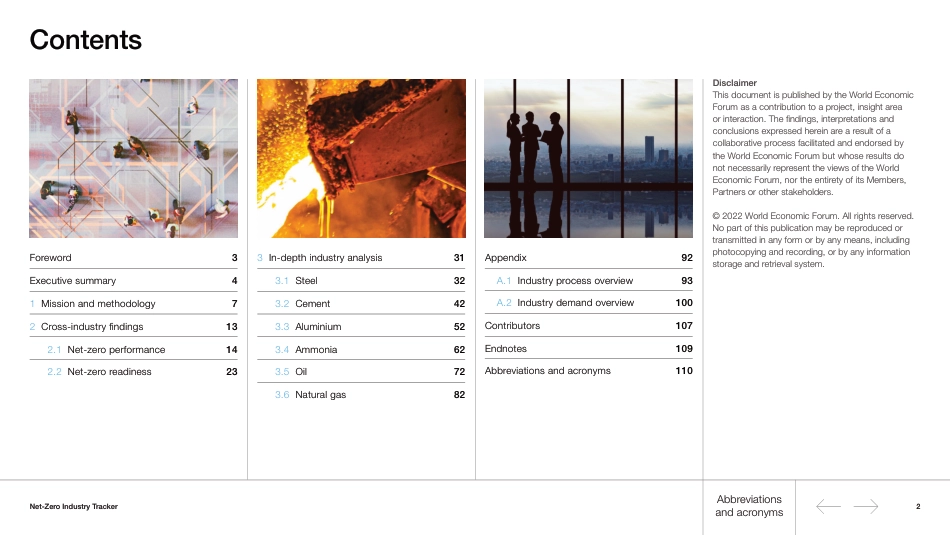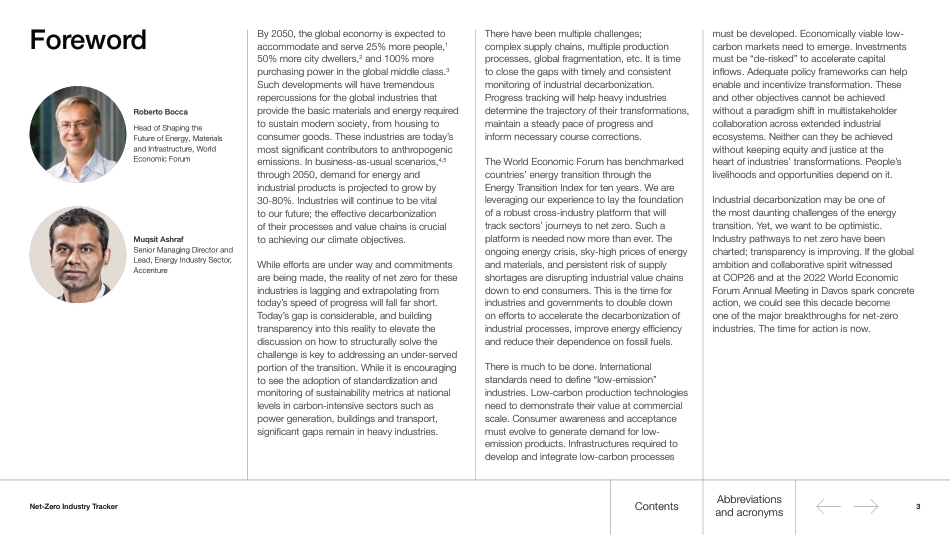Net-Zero Industry Tracker2022 EditionJ U L Y 2 0 2 2In collaboration with AccentureNet-Zero Industry Tracker2Contents© 2022 World Economic Forum. All rights reserved. No part of this publication may be reproduced or transmitted in any form or by any means, including photocopying and recording, or by any information storage and retrieval system.Disclaimer This document is published by the World Economic Forum as a contribution to a project, insight area or interaction. The findings, interpretations and conclusions expressed herein are a result of a collaborative process facilitated and endorsed by the World Economic Forum but whose results do not necessarily represent the views of the World Economic Forum, nor the entirety of its Members, Partners or other stakeholders.Foreword 3Executive summary 41 Mission and methodology 72 Cross-industry findings 13 2.1 Net-zero performance 14 2.2 Net-zero readiness 233 In-depth industry analysis 31 3.1 Steel 32 3.2 Cement 42 3.3 Aluminium 52 3.4 Ammonia 62 3.5 Oil 72 3.6 Natural gas 82Appendix 92 A.1 Industry process overview 93 A.2 Industry demand overview 100Contributors 107Endnotes 109Abbreviations and acronyms 110Abbreviations and acronymsNet-Zero Industry Tracker3ForewordBy 2050, the global economy is expected to accommodate and serve 25% more people,1 50% more city dwellers,2 and 100% more purchasing power in the global middle class.3 Such developments will have tremendous repercussions for the global industries that provide the basic materials and energy required to sustain modern society, from housing to consumer goods. These industries are today’s most significant contributors to anthropogenic emissions. In business-as-usual scenarios,4,5 through 2050, demand for energy ...



